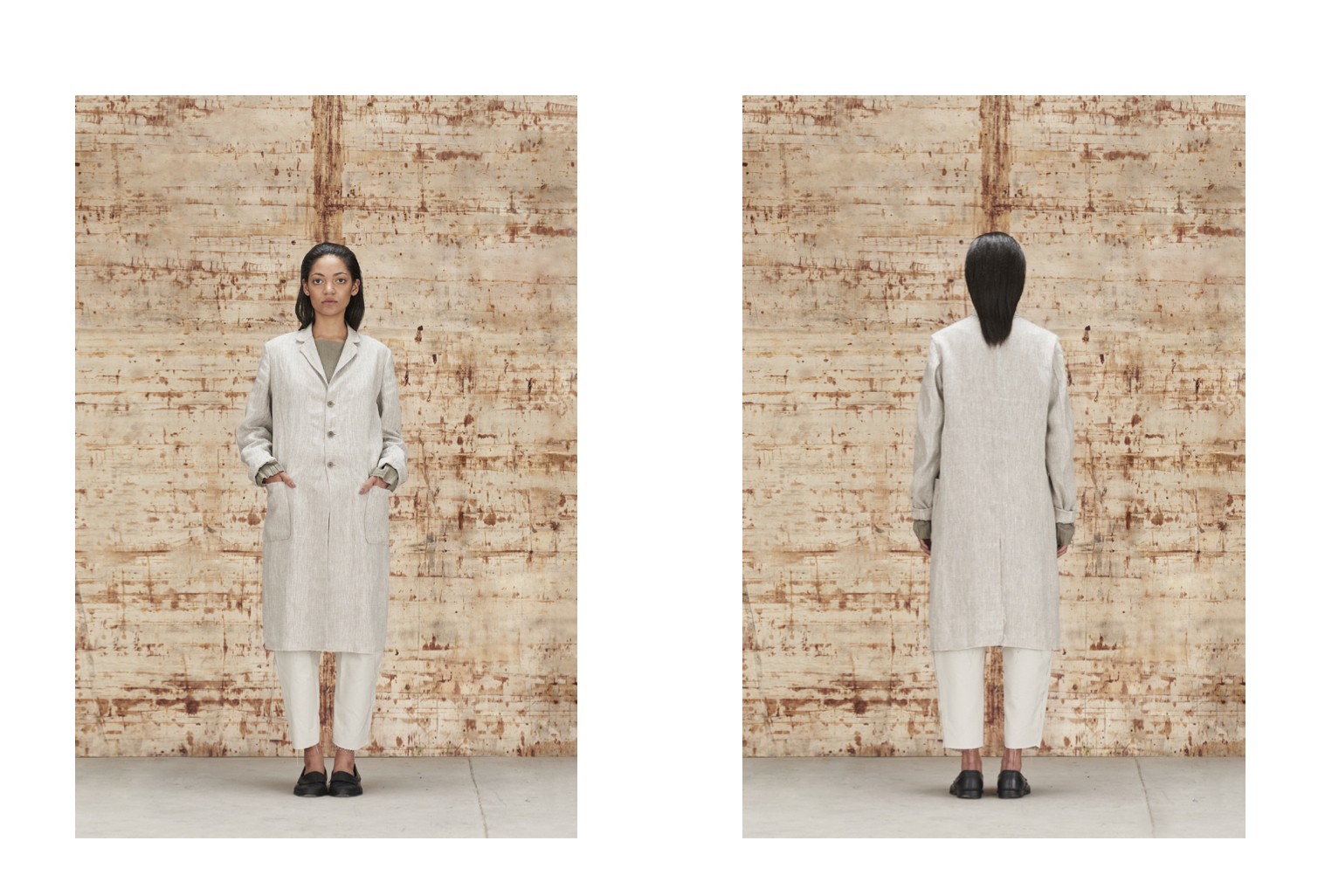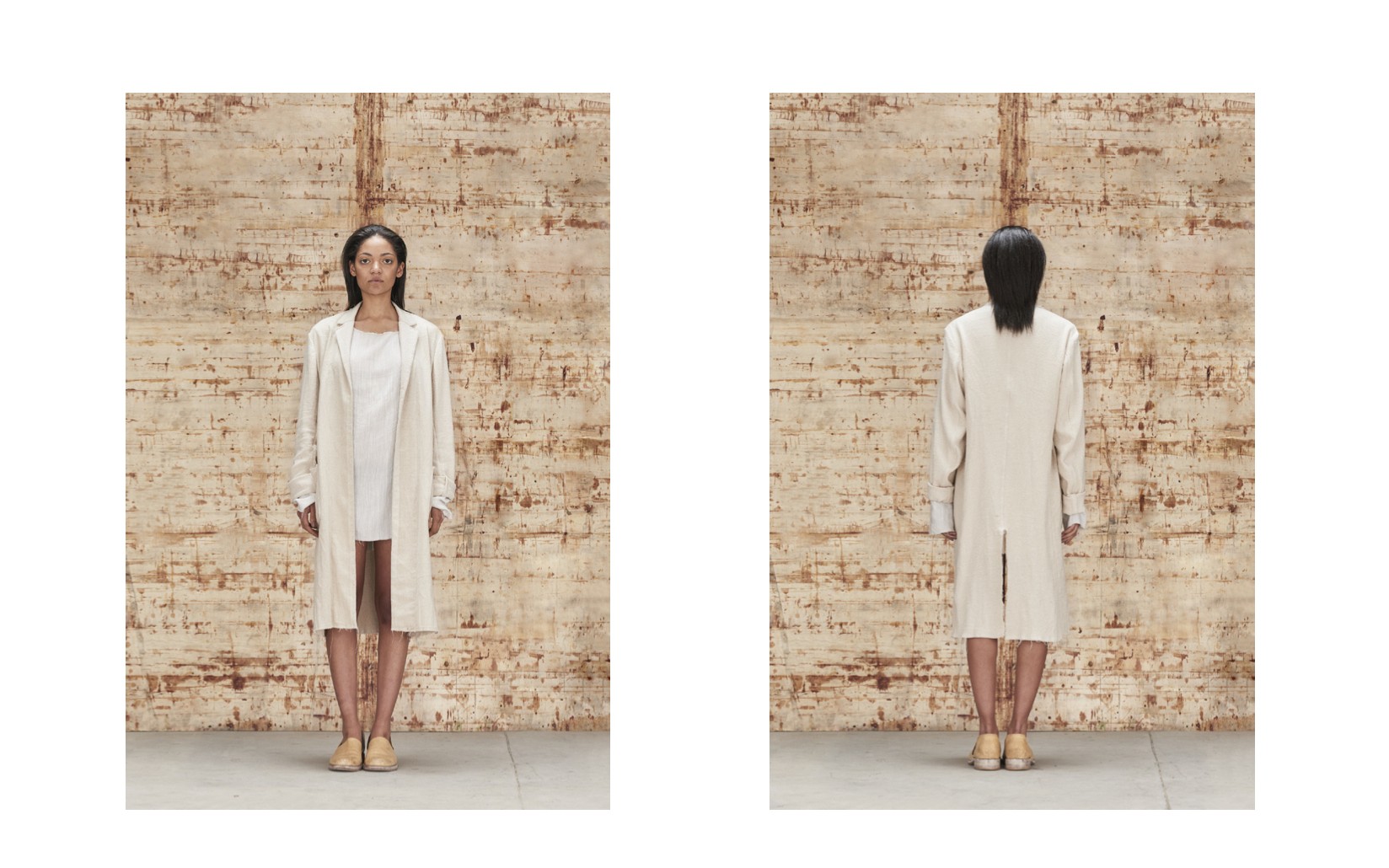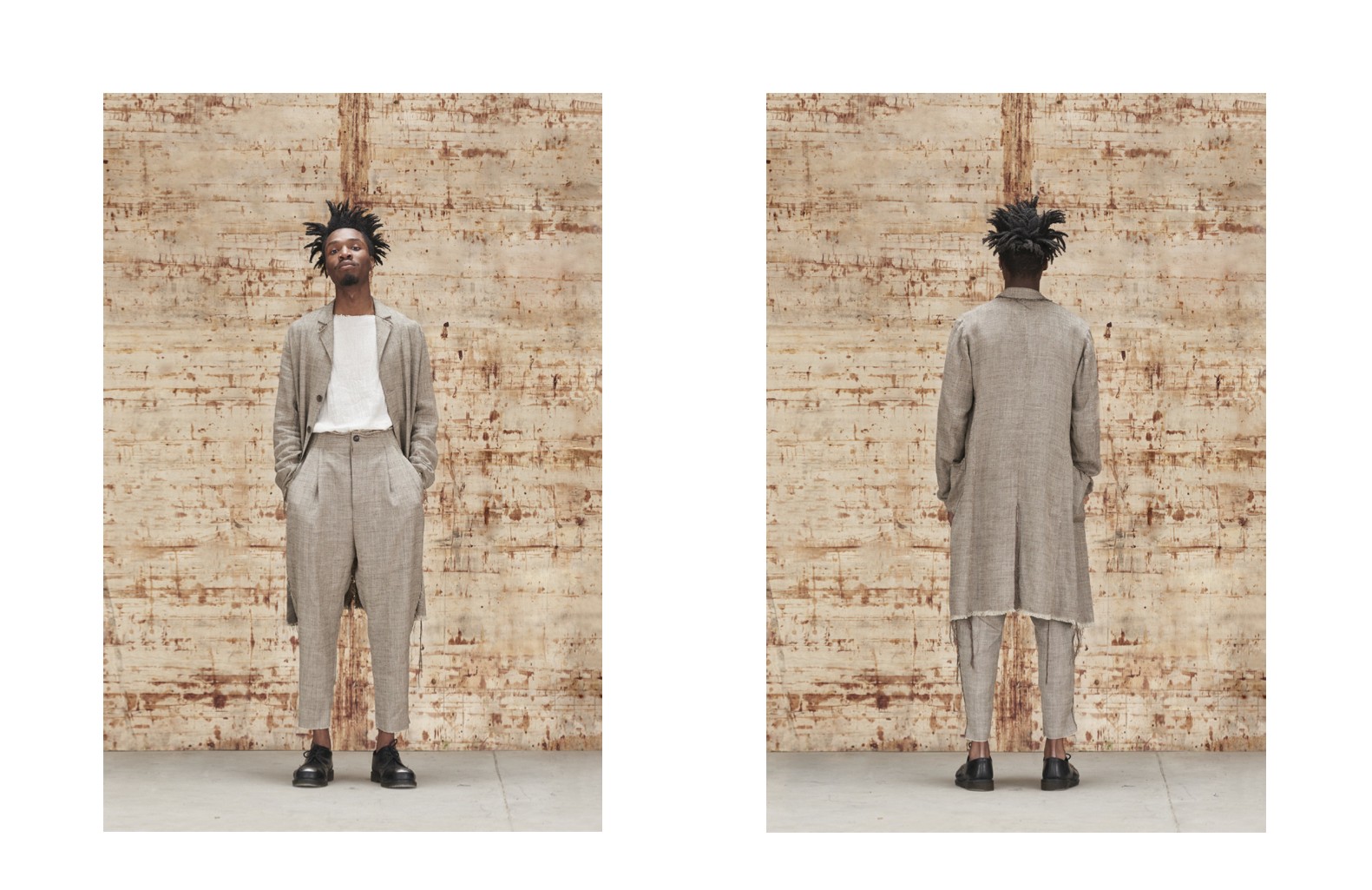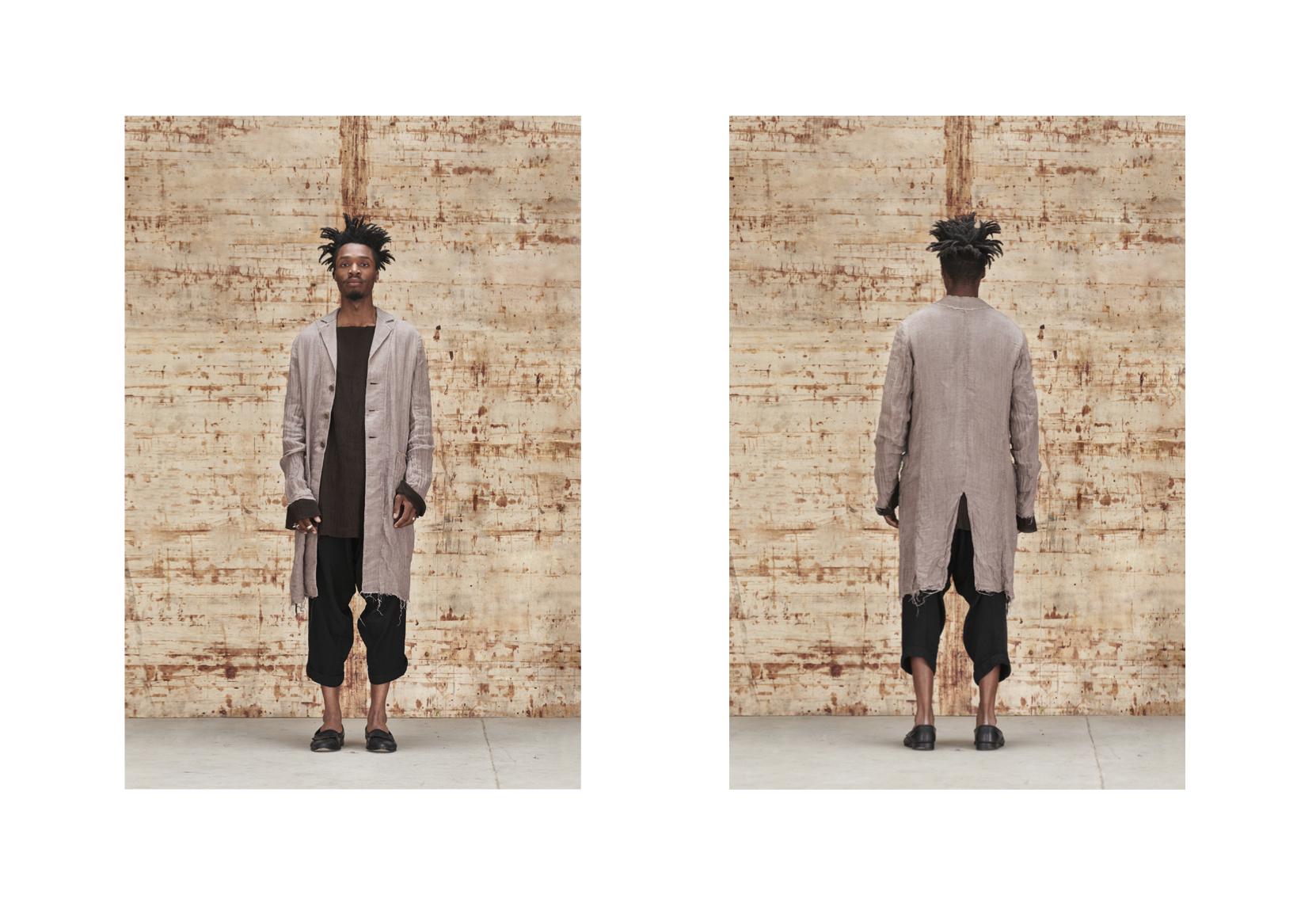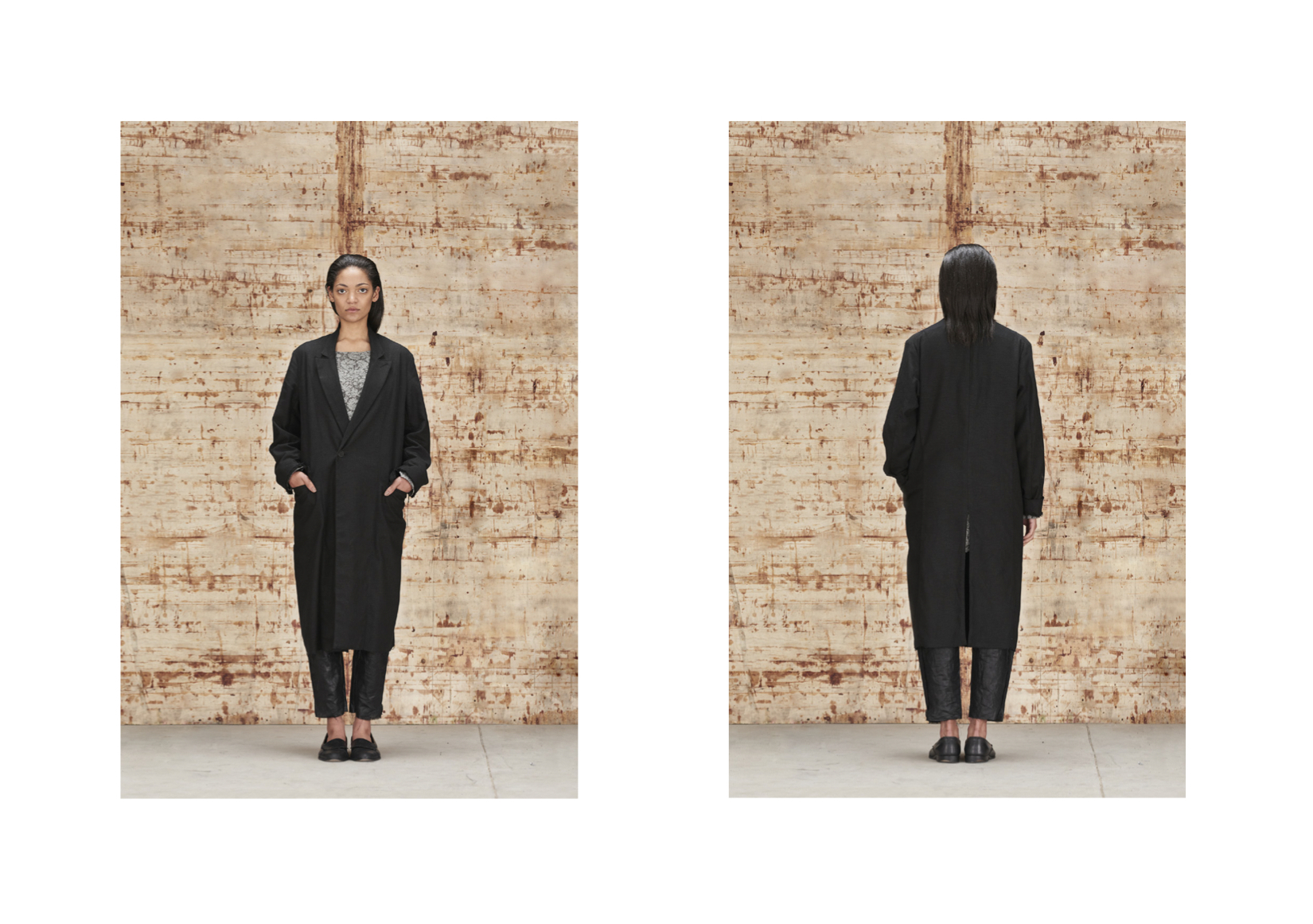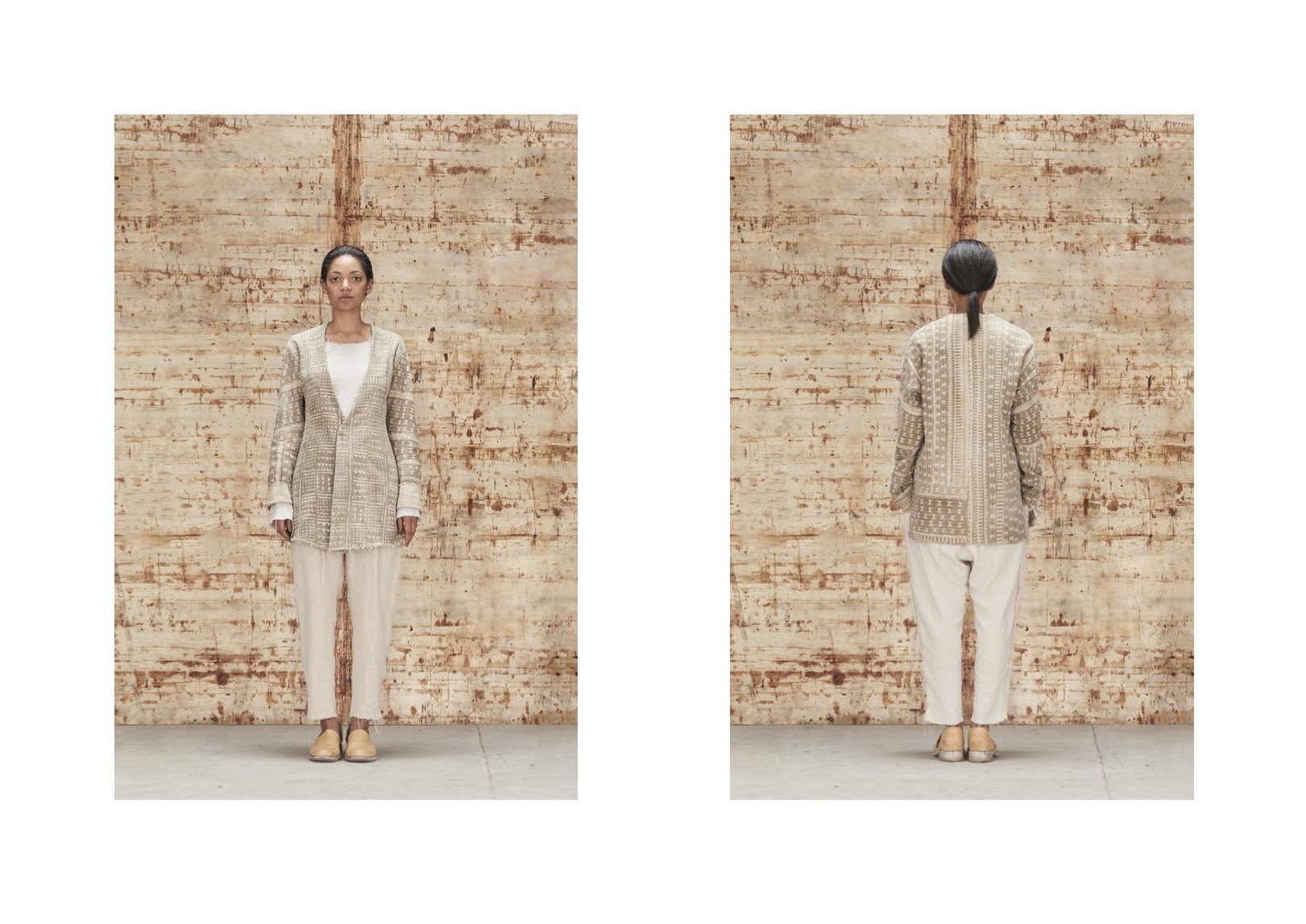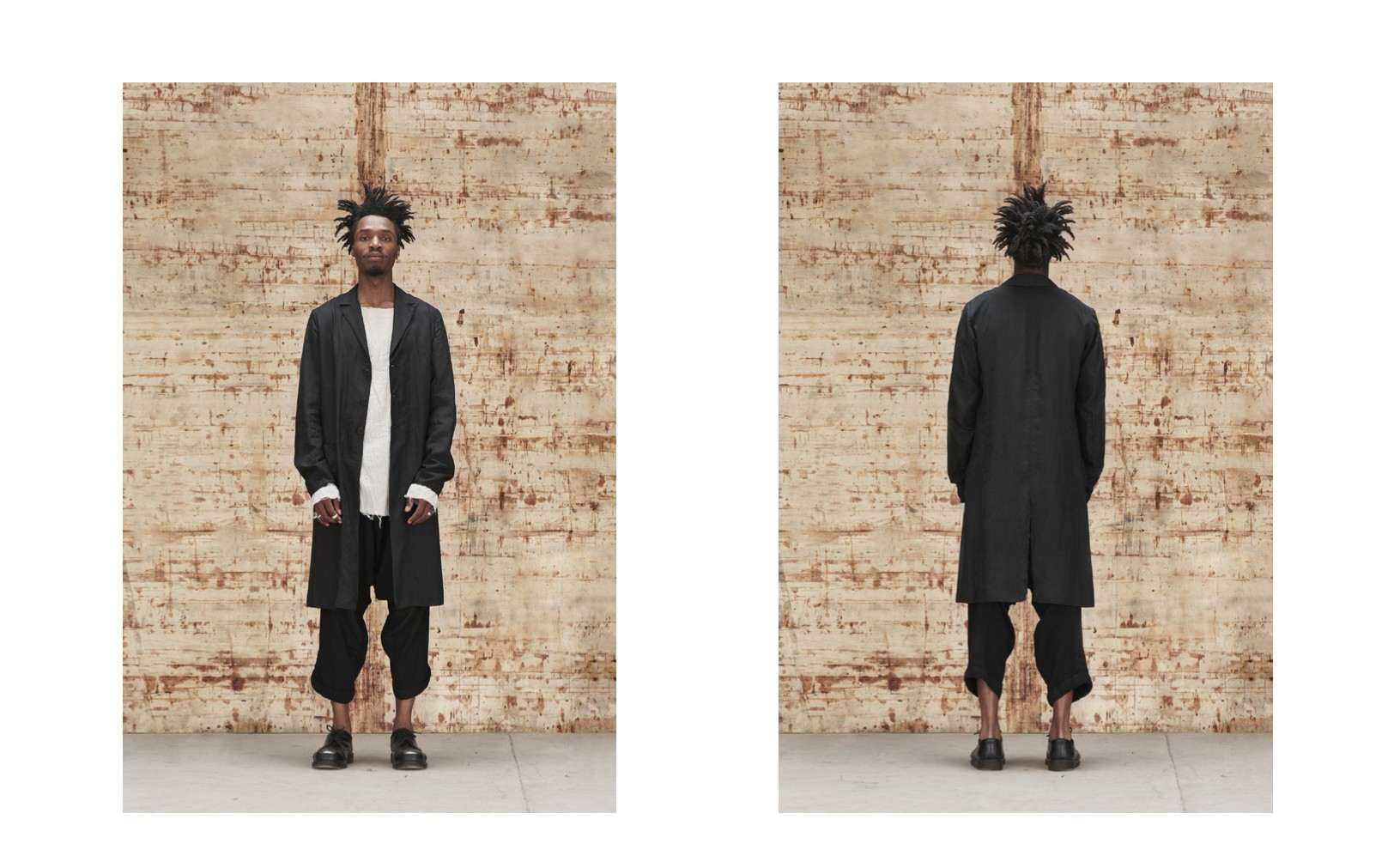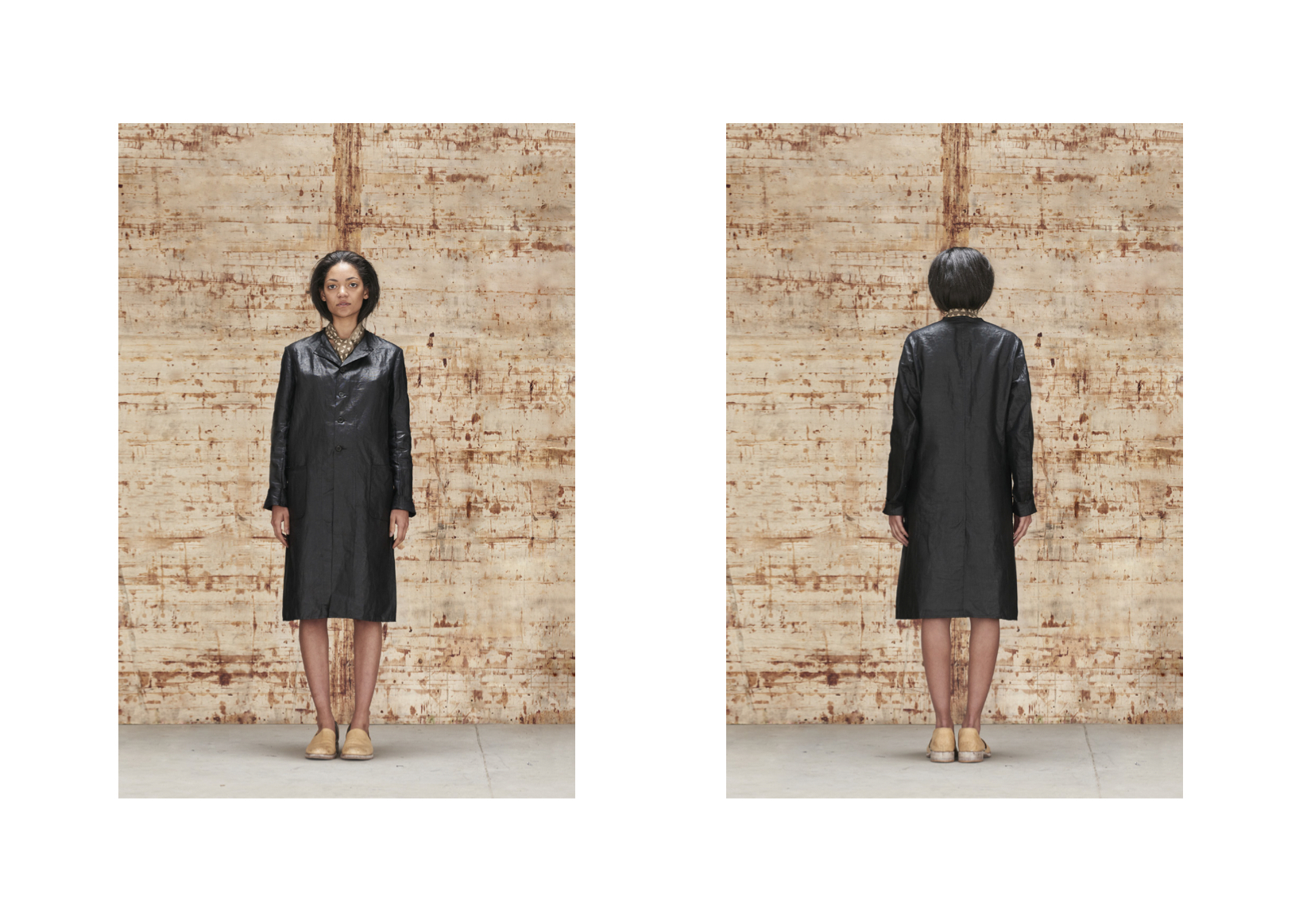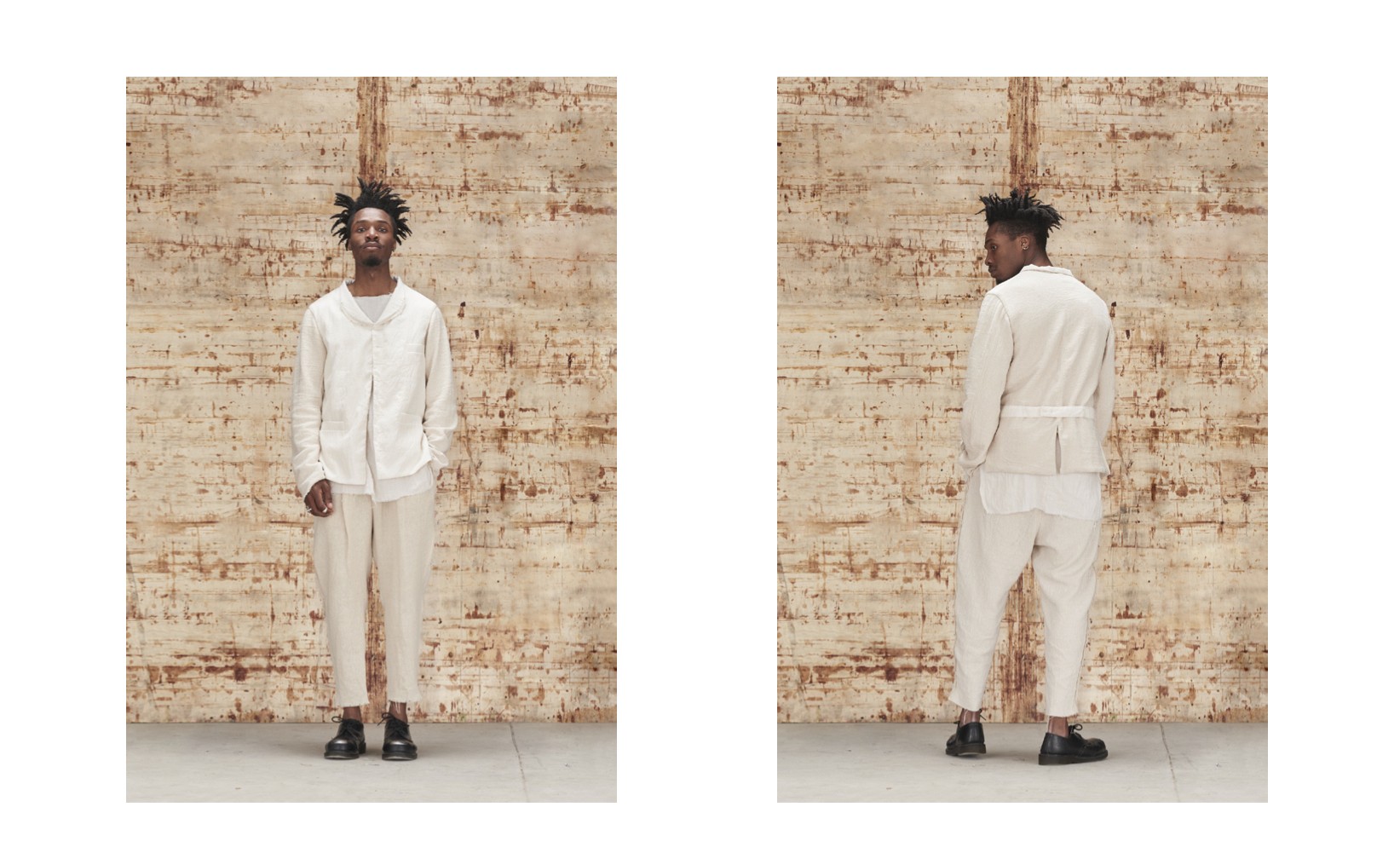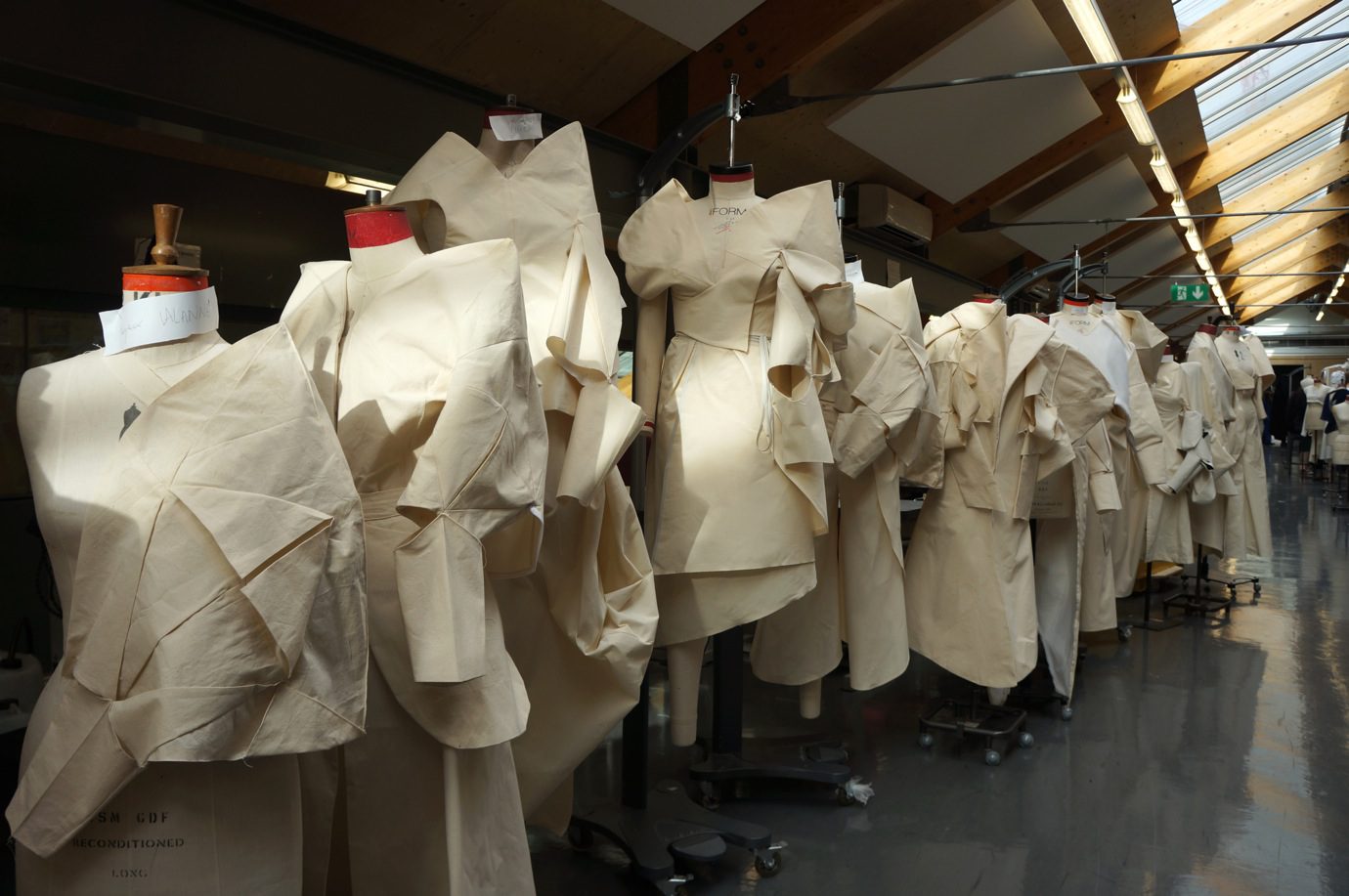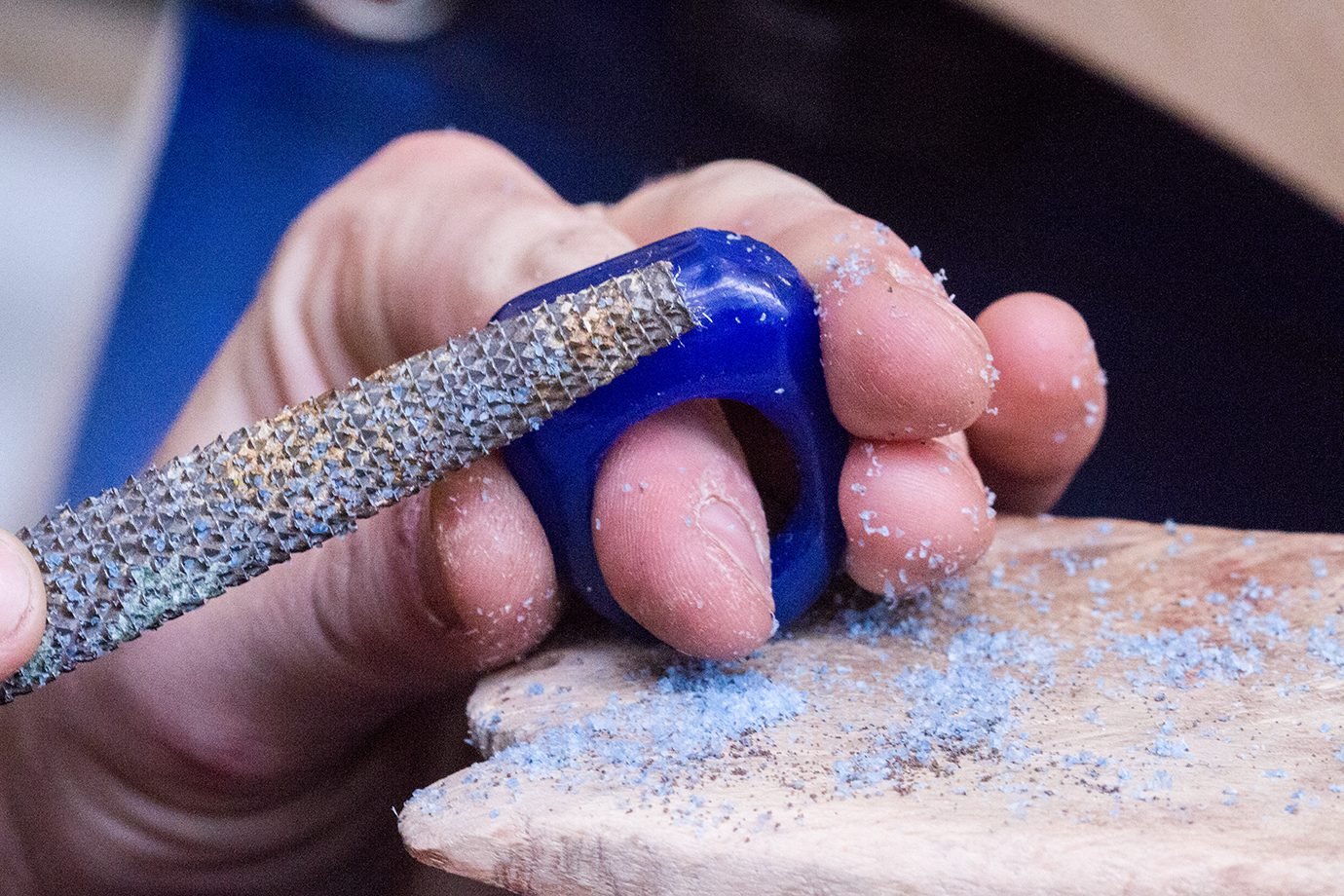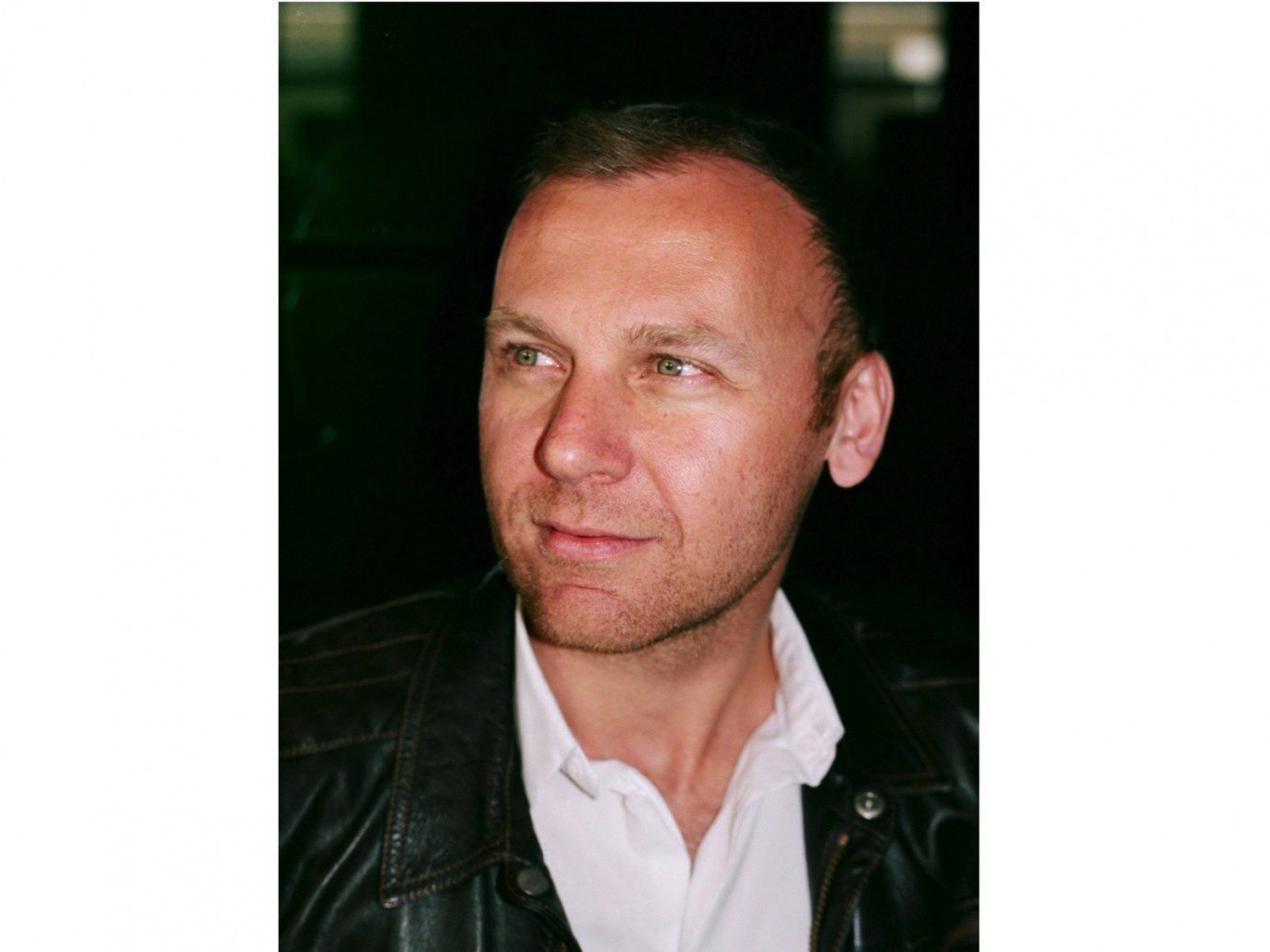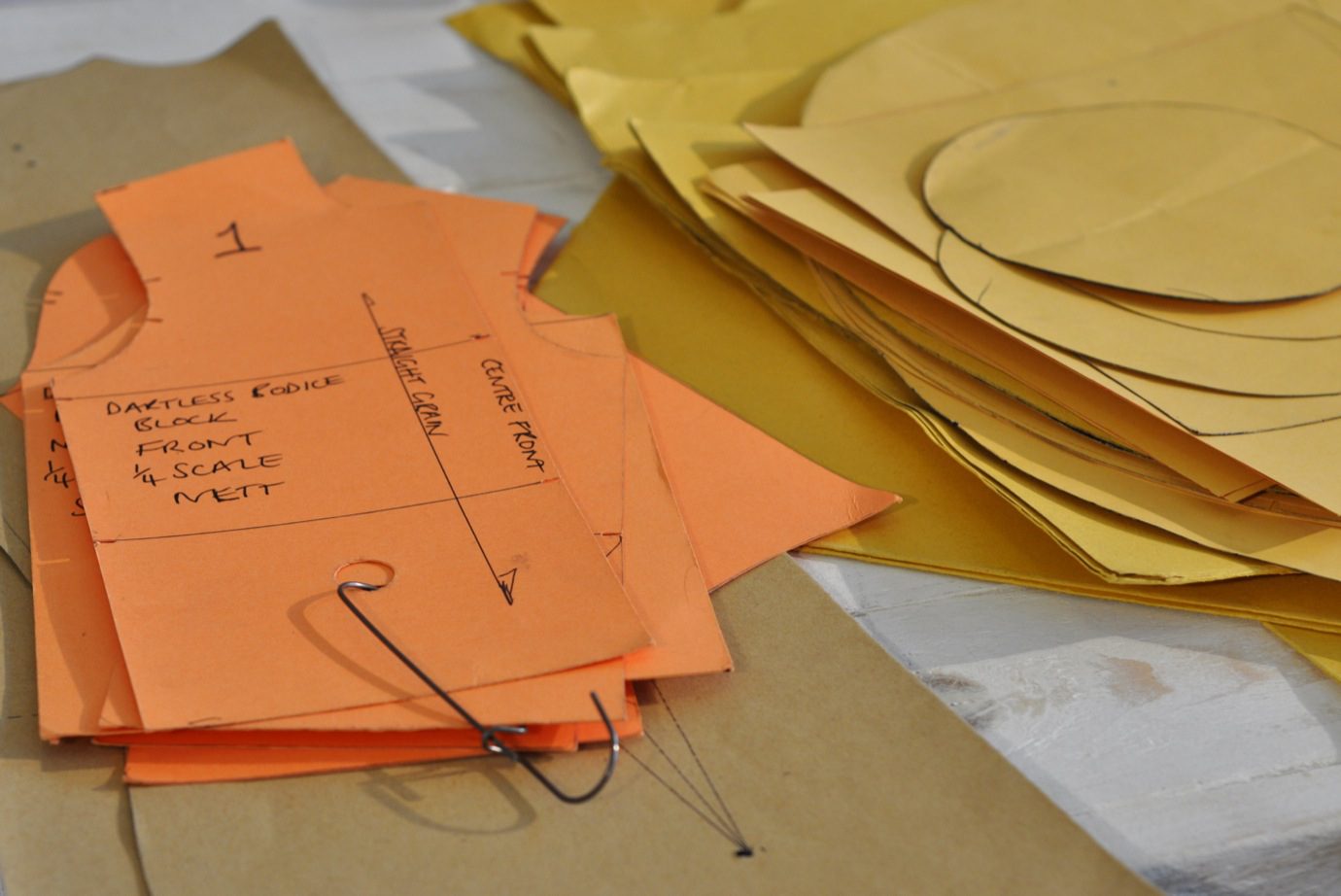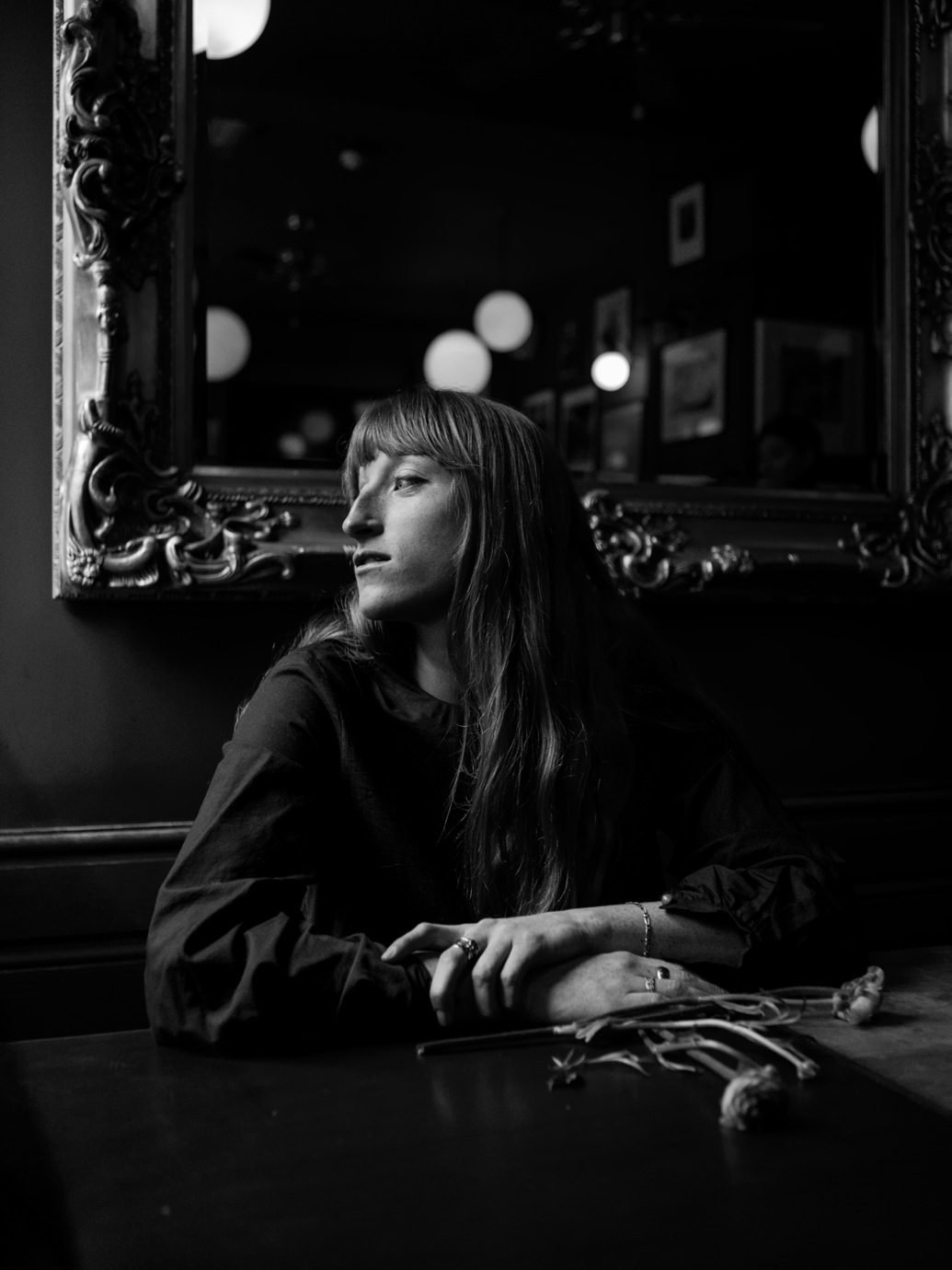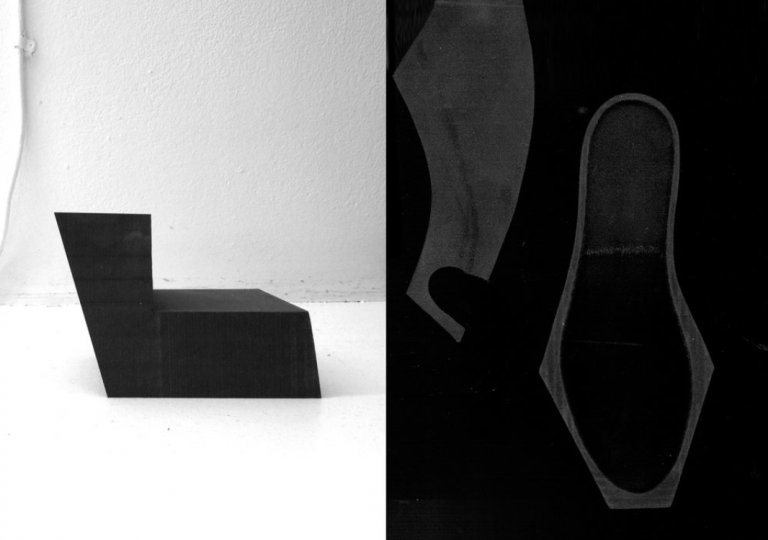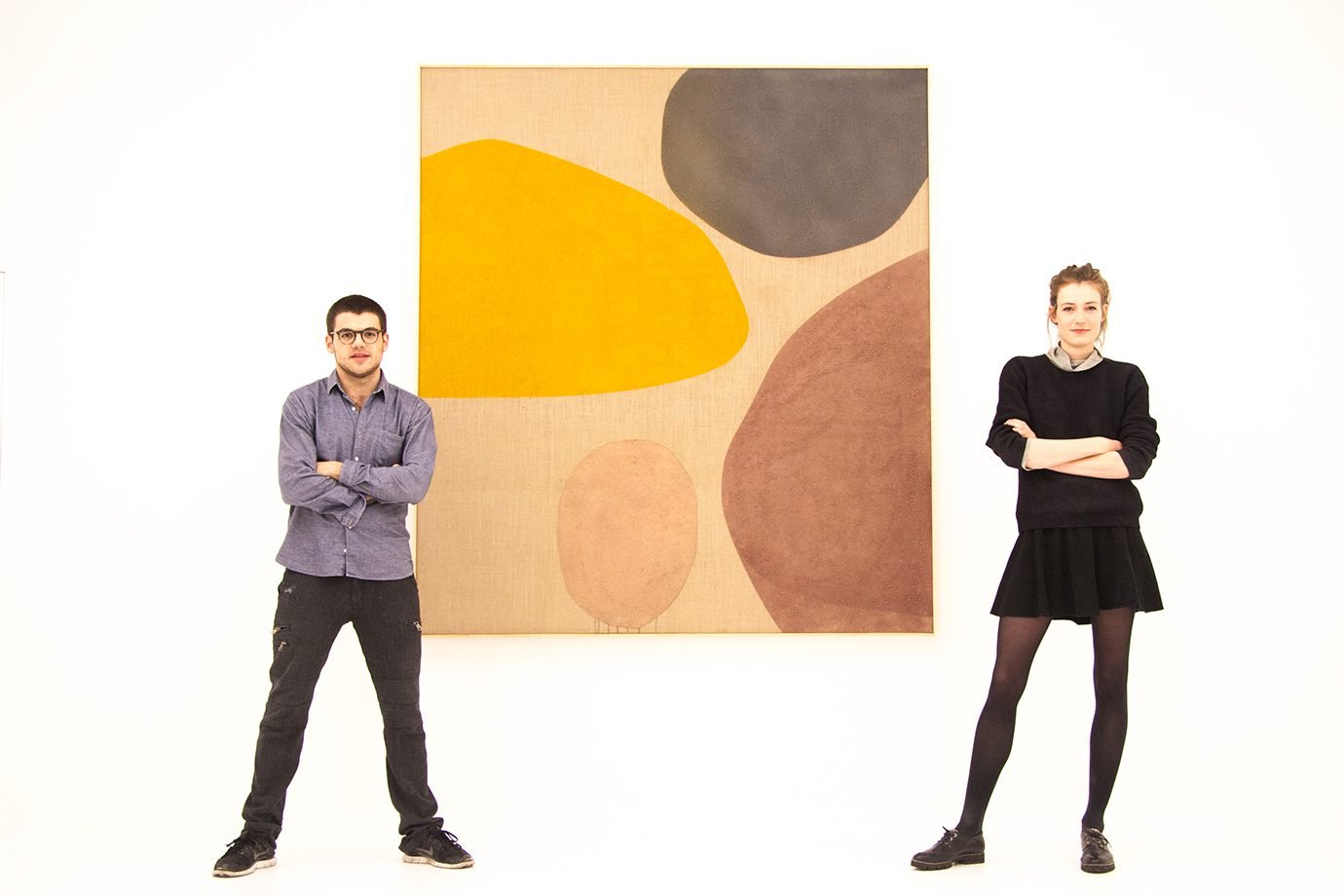“YOU SEE PEOPLE POST “YEAH I’VE MADE IT!” ON FACEBOOK, BUT I WAS THINKING: DOES ‘MAKING IT’ EVEN EXIST? I FEEL LIKE YOU’RE CONSTANTLY GOING TO BE PUTTING IN SHIT TONNES OF EFFORT — MAYBE NOT CONSTANT SLEEPLESS NIGHTS, BUT THERE’S ALWAYS GOING TO BE FRICTION. WITHOUT THAT FRICTION, SOMETHING’S WRONG.”
Why did you want to create your own brand?
It just happened organically, which sounds really cheesy, considering the fact that a lot of the fabrics I use are organic as well! I finished working at De Rien, and then spent seven months in retail trying to figure out what I wanted to do next. I was making money working the usual Monday to Friday 9-5, and I just started making some clothing on the side. I would think: “I need coat,” and make myself one. That was literally how it started. I started doing the pattern, which I took from a really old 40s coat; then I got the fabric from this guy at Portobello Road Market — Andrew, who also sells antique fabrics. They tend to be dead stock or just really old, but such good quality. Plus, they’re cheaper than what you can get in places like Berwick Street, which can rip you off at around £50 a metre.
So the collection organically came from that?
Yeah. I was having dinner one night at my friend’s flat in Bethnal Green; I was wearing the coat and my friend said: “That’s a really nice coat, can I try it on?” There were about eight of us and I got a bit shy knowing I had made it, but I obviously didn’t say anything and agreed. Then even I couldn’t believe it, I was like: “Shit that coat looks so good on you!” Everyone was in agreement saying: “Wow you look so different!” and “You look a million dollars in that coat!” He then asked where he could get one, and I naturally said I made it myself. In the end I made one for him and it just rolled on from there. The brand was built by demand, where I was getting a bit of extra cash from making these clothes on the side. I then bumped into a friend, who’s now my investor, and it’s grown from there.
What character do you have in mind when you’re designing?
Myself. If I like it, then it just gives you as a designer more assurance. There’s some stuff I make that just sits on the rack, where I wonder what it’s still doing there. But then, who knows, somebody else might want to wear it — it’s a guessing game at times.
But I feel like the whole megalomaniac fashion designer thing is so not me. You get two types of people: those who appreciate the craft and love what they’re doing; and then people who love the idea of it and want the end goal straight away. I just like cloth and clothes — I’m a bit obsessed with it.


